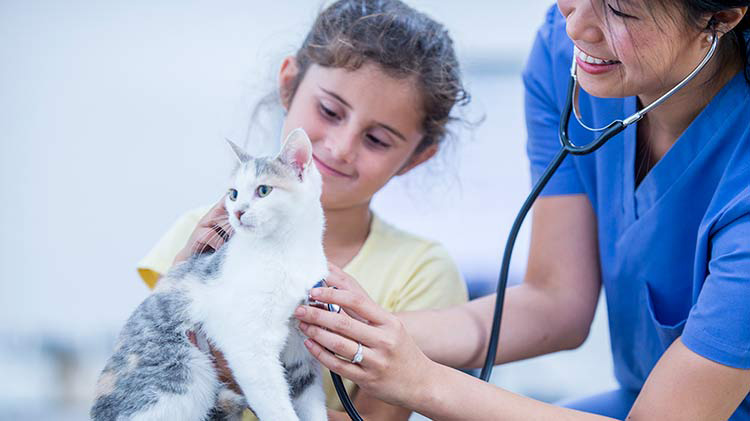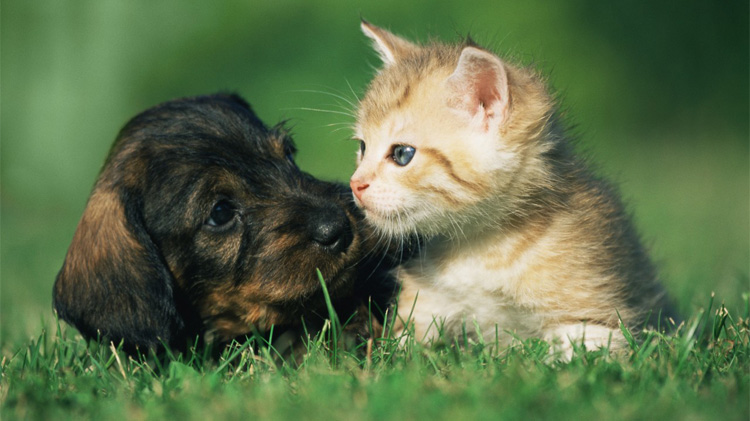How big will my cat get?
Review this helpful guide for your cat’s growth and development.
Your kitten might fit in the palm of your hand now, but they won’t stay that small for long. Before you know it, your tiny furball will grow into a full-sized cat that fits comfortably in your lap.
Of course, a lot happens on the journey from kitten to adult. If you’re like most cat owners, you probably have a few questions. How fast do kittens grow? When is a kitten considered a cat? How big is my cat going to get?
The truth is that it depends, since many factors influence a kitten’s development timeline. But knowing what to expect as your kitten develops isn’t just about satisfying your curiosity. It’s also crucial for ensuring their health and growth are on track.
Factors that can influence cat growth
In addition to consulting your veterinarian, these factors can help determine how big your cat will get — and when they’ll stop growing:
- Sex: Male cats often grow slower and larger than female cats.
- Breed: Larger breeds such as Ragdolls, Maine Coons and Bengals can take longer to grow, and might not reach their full size until 2 to 5 years of age.
- Genetics: Half of your kitten’s DNA comes from their mom, and the other half comes from their dad. By looking at their parents, you can get a pretty good idea of how big they’ll get. Certain mutations can prevent a kitten’s limbs and bones from growing as expected. For example, cats with dwarfism have shorter legs than normal. Your veterinarian can check for any abnormalities during routine check-ups.
- Number of siblings: Larger litters typically result in smaller kittens. There’s simply less milk and nutrients to go around! Litters can range from 1 to 9 kittens, but the average litter size is 4 to 6. As the number of kittens in a litter increases, their size and overall weight decreases.
- Diet and nutrition: All young animals need proper nutrition to grow up big and strong, and cats are no exception. Without it, they’ll grow smaller and slower than expected. Growing kittens have unique nutritional needs and require special kitten food. They shouldn’t transition to adult cat food until 10 to 12 months of age. That said, larger cats may need to wait longer before transitioning to adult cat food.
When do cats reach full size?
Cats come in all shapes and sizes. Many kittens grow the most during their first year of life and stop growing when they’re 12 to 18 months old. However, some breeds can take longer and might not reach their full size until 2 to 5 years of age.
What to expect as your cat grows
Kittens grow like weeds during their first year of life. Here are some important milestones to look for if you want to ensure your kitten is growing as expected:
- 0 to 1 month: Kittens are born blind and deaf. At this age, they completely rely on their mother’s care and milk. After about 4 weeks, kittens can start transitioning to solid food, which is an important stage in the cat life cycle.
- 2 to 4 months: Kittens start losing their baby teeth, and their adult teeth start to emerge. Most kittens lose all their baby teeth by 6 months of age. Learn how to prioritize your kitten’s dental and oral health from the start.
- 4 to 9 months: Most kittens enter their “teenage” years around this time. As they test their boundaries and explore the world around them, kittens grow fast during this stage and may even experience a cat growth spurt.
- 9 to 12 months: Around their first birthday, most cats are fully grown. They’ve reached their full size and height but may continue filling out their frame. Just like humans, cats can continue to gain muscle mass and fat as they age.
How to raise a healthy kitten
Many factors impact a cat’s full-grown size, but no matter how small or big your kitten gets, you can help keep them healthy during their life. Here’s how:
- Visit the veterinarian regularly for routine check-ups. It’s also important to follow their recommendations when it comes to wellness and preventive care, diet, vaccinations and spaying or neutering.
- Feed your kitten high-quality food that’s specifically made for growing kittens! Kitten food is more nutrient-dense and has more calories, protein and fat than adult cat food. Once they’re 10 to 12 months old, ask your veterinarian about transitioning to adult cat food. This transition is more important than you might think, especially if you want to prevent your cat from becoming overweight.
- Consider signing up for Trupanion pet insurance. There can be benefits to investing in cat insurance sooner. By getting insurance coverage on your cat while they’re young, you can help better protect them from the unexpected (like potential allergies and UTIs) as they grow up.





